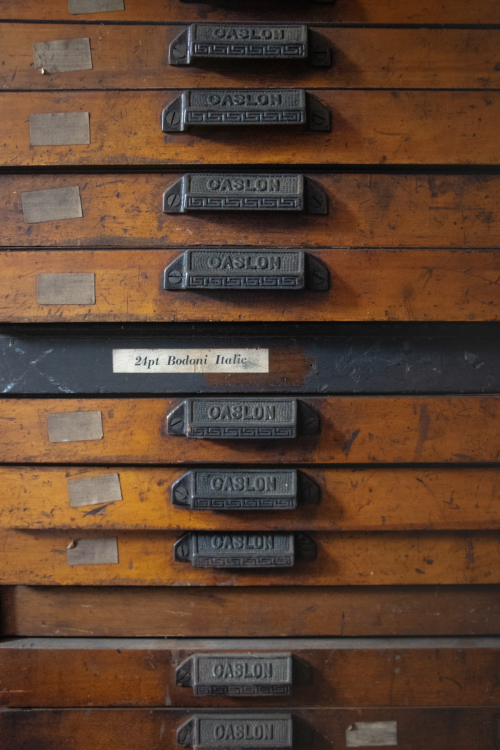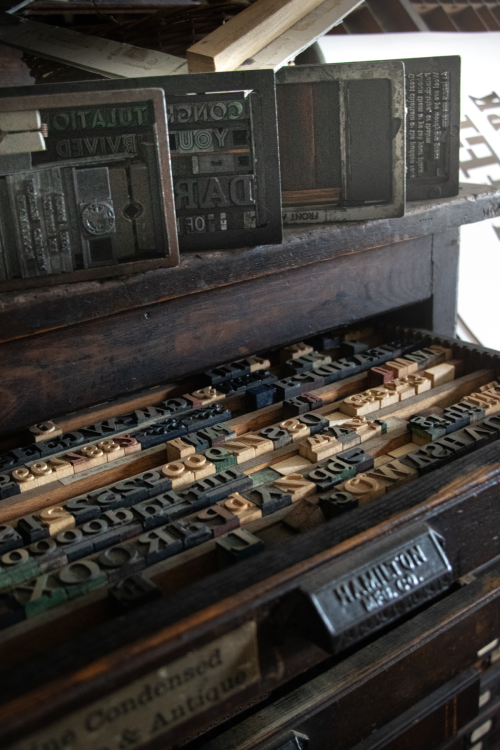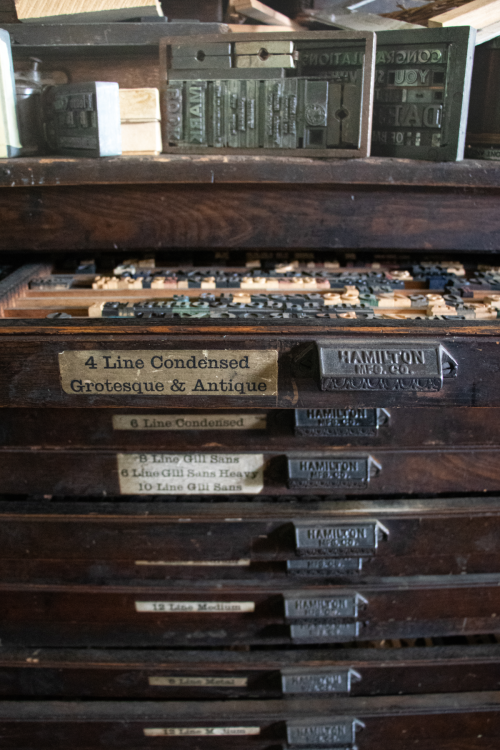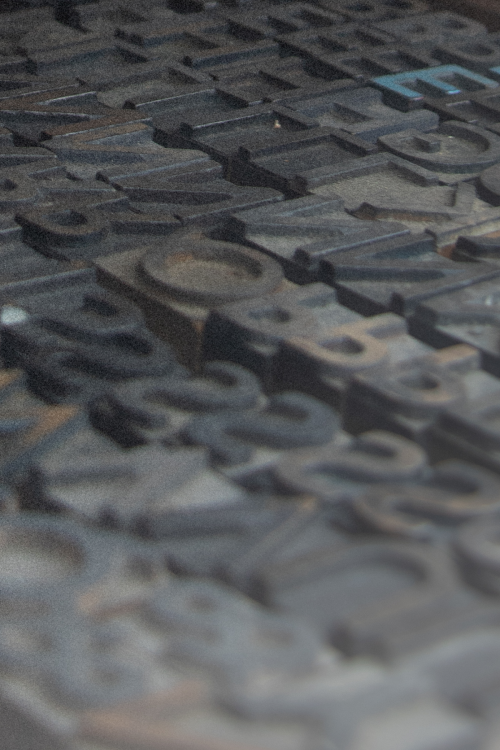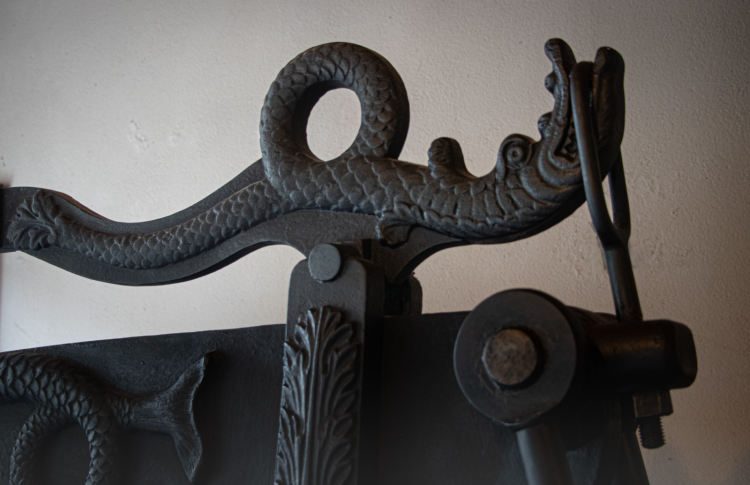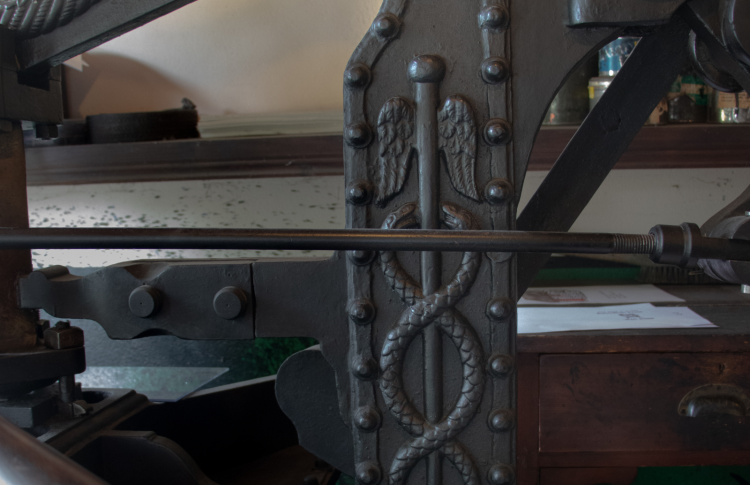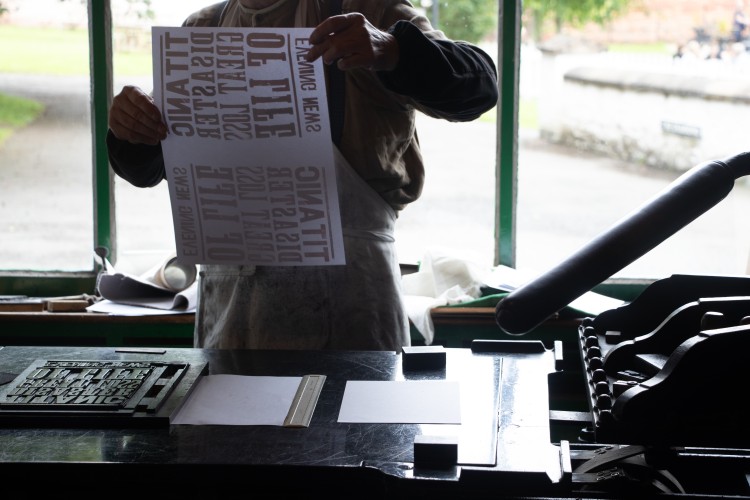
Where is it from?
The W&G Baird print shop is housed on the ground floor of a two-storey reproduction building, which was built specifically to support a fine 1600s roof of architectural significance from New Row in Coleraine, County Londonderry.
Why is it special?
The shop is designed to illustrate the range of work undertaken by a letterpress printer in a small town in Ulster in the early 1900s. There has been a printing industry in Ulster for over three hundred years. The first books were produced in Belfast in the last decade of the seventeenth century, and in the eighteenth century the industry spread to towns like Strabane, Newry and Londonderry. By the nineteenth century the printer's shop had become part of the fabric of life in all Ulster's towns.
This exhibition is sponsored by W&G Baird, one of Ireland's most historically important printers. They were the founders and longterm owners of the Belfast Telegraph, originally titled the Belfast Evening Telegraph, which first published in 1870. In 1861 brothers William and Geogre Baird started thier printing business on Arthur Street, Belfast. Our printshop and its working objects are not a copy of the early W&G Baird printing works, but is rather a collection of typical late nineteenth to early twentieth-century printing equipment.
What is it like inside?
The ground floor of the building has two separate areas: the compositor’s room and the machine room.
The machine room contains three working presses:
- a large and ornate Clymer and Dixon - Columbian Eagle platen press, dated 1844
- a Minerva Cropper treadle, platen press, dated 1900
- Albion platen press by Hopkinson and Cope, c. 1868
The person who operated these machines was the printer. The compositor set the type. The printer’s duties were to ensure the efficient running of the various printing presses and manage the supplies of the ink and paper.
Next to the machine room is the compositor’s room, where hundreds of thousands of pieces of printing type were kept in special drawers called cases. When a printing job was ordered the compositor assembled the type by hand, letter by letter, back to front, in a negative image of the finished printing job. A compositor was frequently left to his own devices to construct his page layout with style and artistry.

Look out for the three presses in the machine room. Note also the untidy nature of the compositor’s room which is in keeping with how these busy work places tended to be.
The Compositor's Room
The Columbian Press
Our printers at W&G Baird are usually stationed behind the printshop's centrepiece, the Columbian Press. The Columbian Press was a printing press invented by George Clymer of Philadelphia, USA, in 1812. Production of the model continued until 1910, and its hard-wearing reputation, versatile function, and distinctly decorative design ensured its popularity throughout its century-long production for market.

The Columbian Press is an exceptional example of nineteenth-century decorative iron casting with symbols in relief of Hermes the universal messenger, two dolphins representing wisdom, and - perched on top of the machine - the American Eagle on an olive branch offering freedom of speech and peace.
This particular machine spent most of its working life printing newspapers in Armagh, and was still in use in the 1950s as a proofing press. Today, it is still in fine working order, with a possible output of 150 copies an hour in the hands of three operatives.

'Columbian Press, No. 1081. Clymer & Dixon original patentees & manufacturers. 10 Einsbury St., London, 1844'
